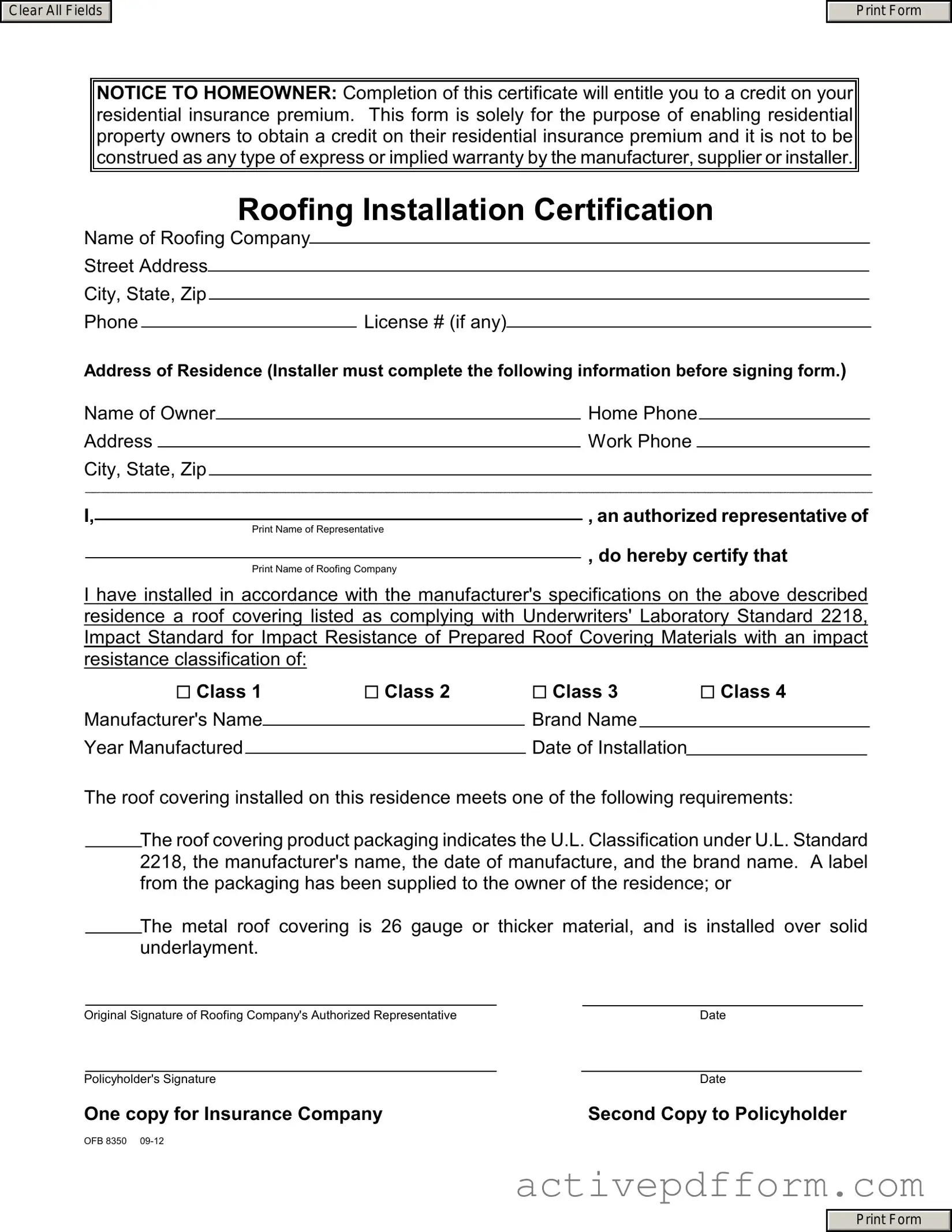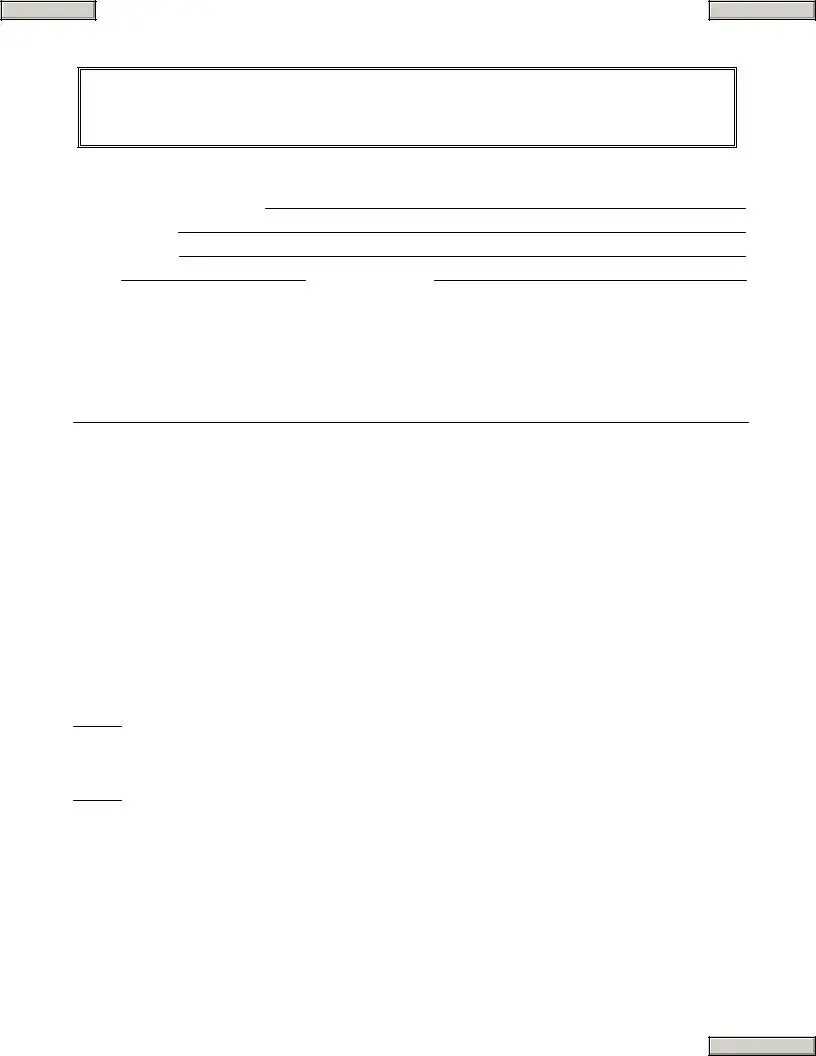What is the purpose of the Roofing Certificate form?
The Roofing Certificate form is designed to help homeowners obtain a reduction in their residential insurance premiums. By completing this form, homeowners can certify that their roof meets specific standards for impact resistance, which may lead to lower insurance costs.
Who is responsible for completing the form?
The roofing company that installs the roof is responsible for completing the form. An authorized representative of the roofing company must fill in the necessary details about the installation and certify that it complies with the manufacturer’s specifications and Underwriters’ Laboratory Standard 2218.
What information is required on the Roofing Certificate form?
The form requires several pieces of information, including the name and address of the roofing company, the owner’s name and contact information, and details about the roof covering installed. This includes the impact resistance classification, manufacturer’s name, brand name, and the date of installation.
How does the certification affect my insurance premium?
By providing this certification to your insurance company, you may qualify for a reduction in your residential insurance premium. Insurance companies often offer discounts for homes with roofs that meet certain impact resistance standards, as they are considered to be less risky.
What happens if the information on the form is misrepresented?
Any intentional misrepresentation on the form is considered fraud. This could lead to serious consequences, including the denial of your insurance claim or cancellation of your policy. It is crucial to ensure that all information provided is accurate and truthful.
What should I do with the completed form?
Once the form is completed and signed by the roofing company’s authorized representative, you should keep one copy for your records. The second copy must be submitted to your insurance company to apply for the premium reduction.

